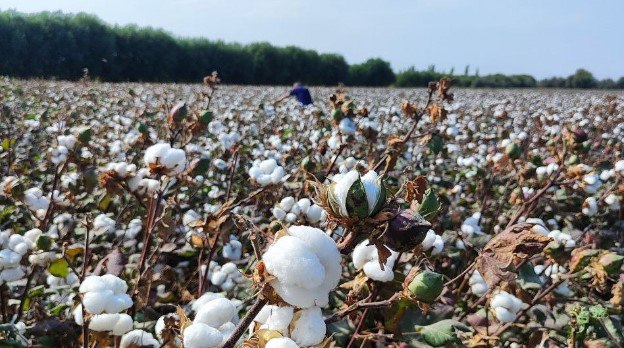The Cabinet of Ministers of Uzbekistan approved new measures to support raw cotton producers for 2024, setting a futures price of UZS 7.8mn ($611) per ton on the commodity exchange. Cotton farmers and clusters are prohibited from selling below this price, which is tied to global market rates, while exchange contracts will have a minimum price of UZS 6.8mn ($533) per ton. Additionally, a subsidy of UZS 1mn ($78) per ton will be granted based on electronic invoices for each sale on the exchange.

However, independent economist Yuliy Yusupov has raised concerns, suggesting the price is based on seasonally high figures from earlier in the year when global prices were trending upwards. By autumn, prices on the New York Stock Exchange had decreased significantly, and by recalculating, the cotton price has dropped to around UZS 6,000 ($0.47) per kilogram. According to Yusupov, cotton can be purchased even cheaper in neighboring Kazakhstan.
"Textile enterprises are in a tough situation. It’s more profitable for them to buy cotton on the global market. Otherwise, they simply cannot compete with those purchasing cheaper raw materials," Yusupov wrote.
Muzaffar Razakov, another economist, highlighted that current production costs in Uzbekistan exceed global prices, leading to a market failure. Razakov proposed studying international practices, such as the agricultural stabilization funds used in countries like the U.S., where the government covers price differences for farmers through specific programs.
"The transition to a market economy is both painful and complex. Neither we nor the government fully understand how to do it correctly," Razakov explained. "Moving too quickly to full market regulation would cause chaos, while strict administrative controls have led to their own issues."
Earlier in the year, efforts to find a balanced pricing strategy led back to the idea of a minimum price, which Razakov opposes. He suggested a price corridor instead, or using futures indices to better track pricing trends. However, his proposal was not adopted, and a minimum price was set at the local maximum level from the past year.
Entering the 2024 cotton harvest, global prices have declined significantly, creating a challenge for the textile industry, which is deeply integrated into the global economy.
"We sell our textiles on the global market, so we must align with international prices," Razakov said, pointing out a disconnect between farmers, local authorities, and the Ministry of Agriculture.

"When we say, 'I buy cotton but can't sell it—I'll go bankrupt,' they respond with, 'That's not our concern, you signed the contract,'" he continued, describing a deadlock where market realities conflict with administrative controls.
Razakov is strongly against a fixed minimum price, arguing that while it may prevent underreporting contract values to reduce taxes and fees, it only addresses the symptoms, not the root cause of the issue. In the textile industry, a lack of substantial cash flow prevents gray-market operations, he explained.
"Maybe a price corridor could work, but we cannot impose rigid rules. It will lead to speculation and market provocations," Razakov warned.
He also noted that manual labor constitutes a significant portion of cotton production costs in Uzbekistan. Mechanization requires large investments, and farmers, unlike textile clusters, often cannot afford harvesters, further driving up production costs.
Razakov dismissed claims that textile clusters pressure farmers into lowering cotton prices. He explained that clusters lack the administrative resources to exert such pressure, and that farmers were given the choice of which cluster to sell to within their region in December.
"The market must account for the nuances in cotton varieties and quality," Razakov said. "Cotton from Kashkadarya and Bukhara produces higher yields, so its cost will naturally be lower than cotton from the Fergana Valley."

Despite the challenges, Razakov emphasized that Uzbekistan's textile industry has made significant progress over the past five years, a process that took other countries three decades. Yet the industry still faces "growing pains," especially after the COVID-19 pandemic led to a freeze in global demand due to high stock levels.
"Our competitors are not within Uzbekistan. Our fiercest competitors are global players like India, China, Turkey, Bangladesh, and Vietnam," Razakov stated.
He predicted that the current crisis will result in a transformation of the industry, with only the most competitive companies surviving.
Razakov believes that transitioning to a market economy is inevitable but warned that the key question is whether it will be chaotic or guided by state policies.
"The market economy is the most natural way forward," he emphasized, urging deeper integration with the global economic system.
As Uzbekistan connects more with global markets, Razakov believes the economy will become more market-oriented, and the transition to a market economy will be a "national reform" supported by all players.
In conclusion, Razakov stressed that tackling the root causes of the cotton pricing crisis is critical, warning against policies that merely address the symptoms.
"We must focus on reducing production costs and improving our competitiveness in the global market."
Follow Daryo's official Instagram and Twitter pages to keep current on world news.
Comments (0)